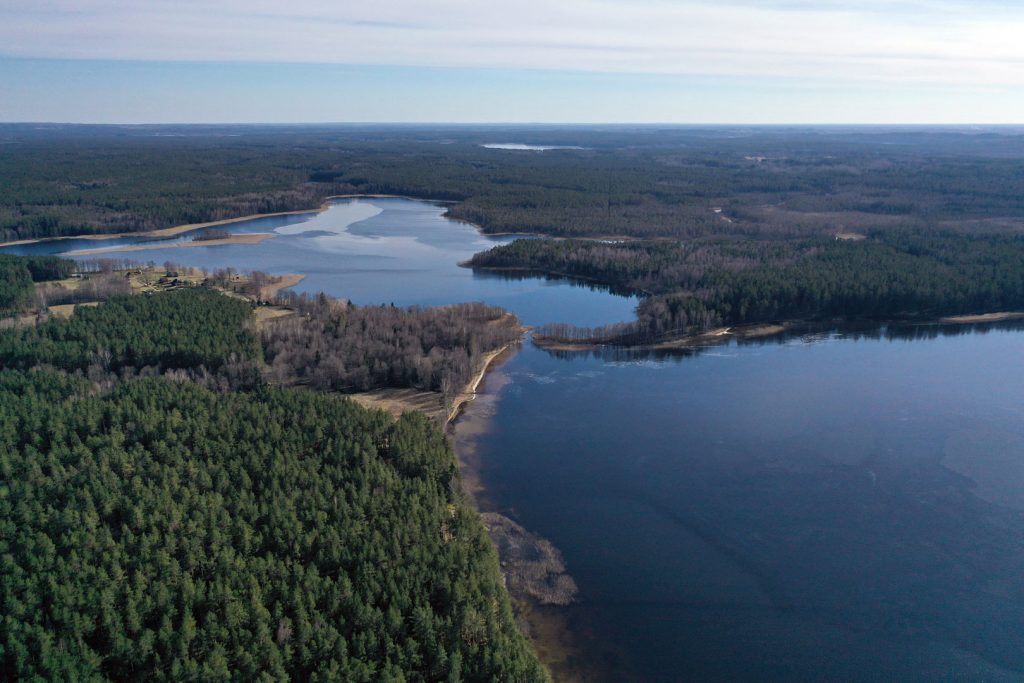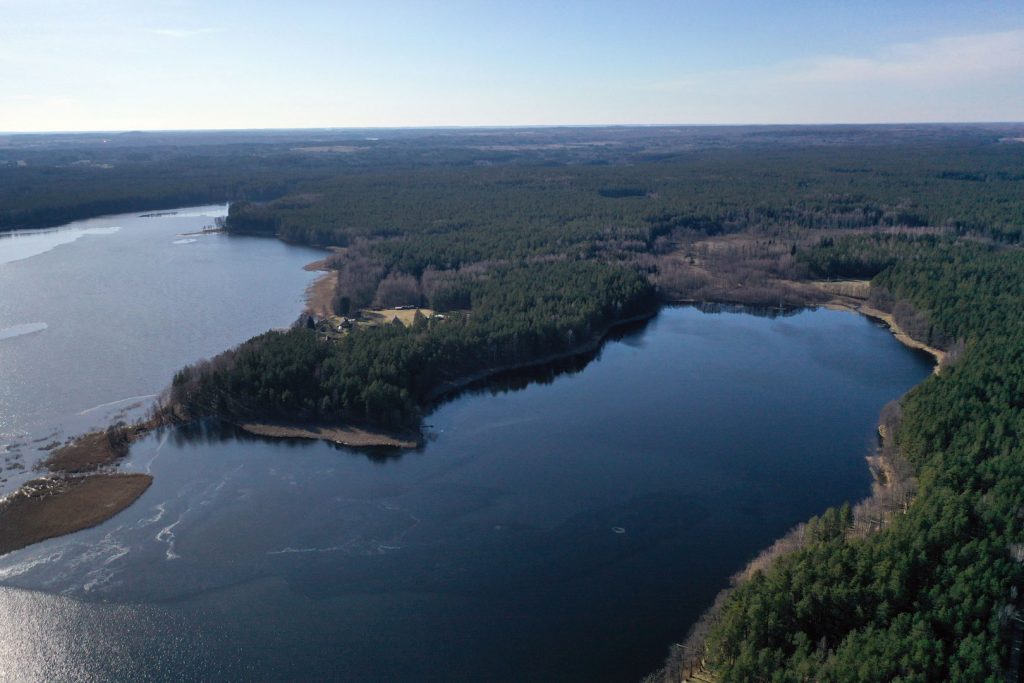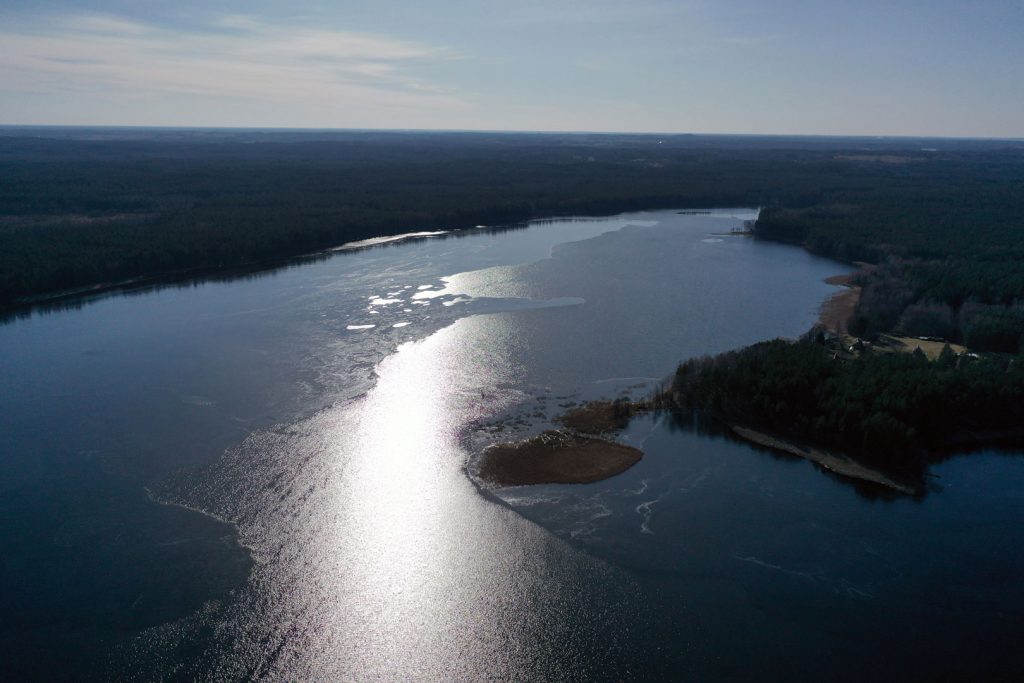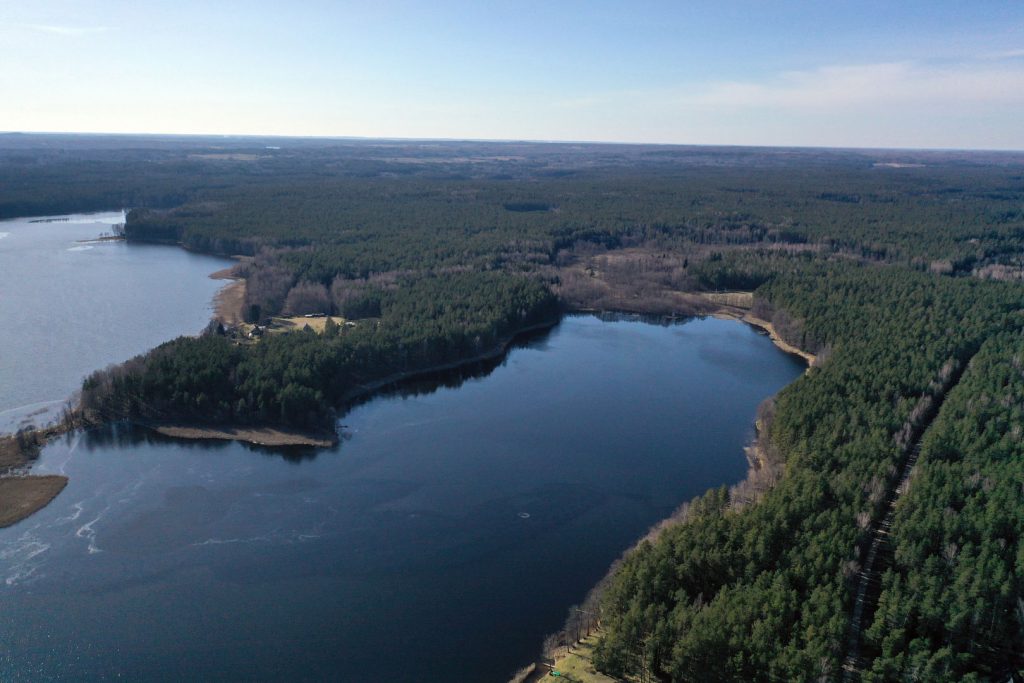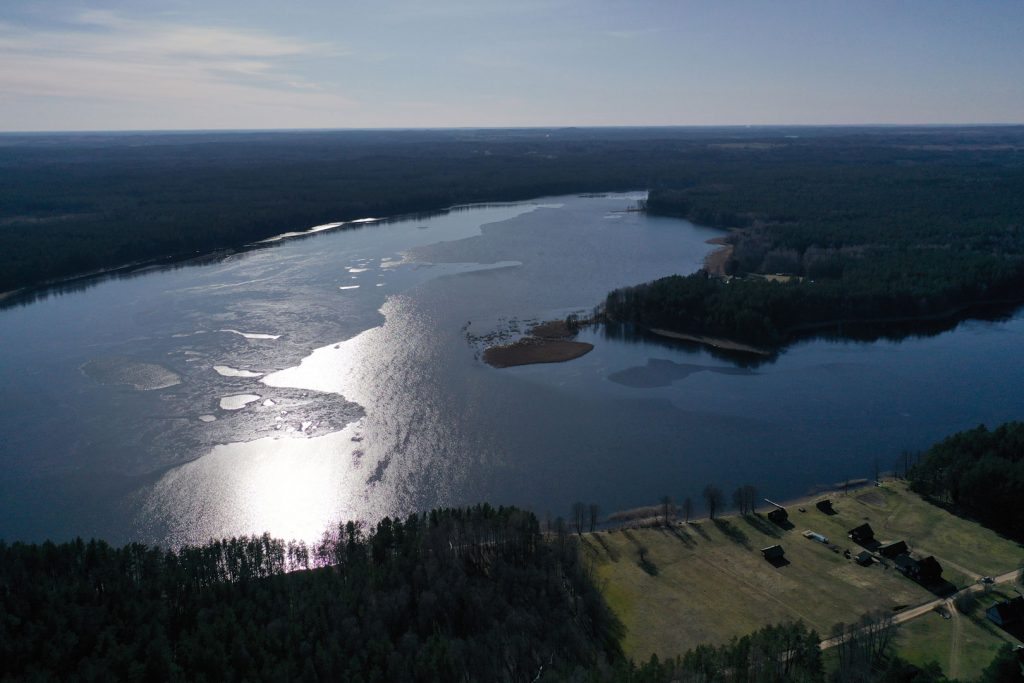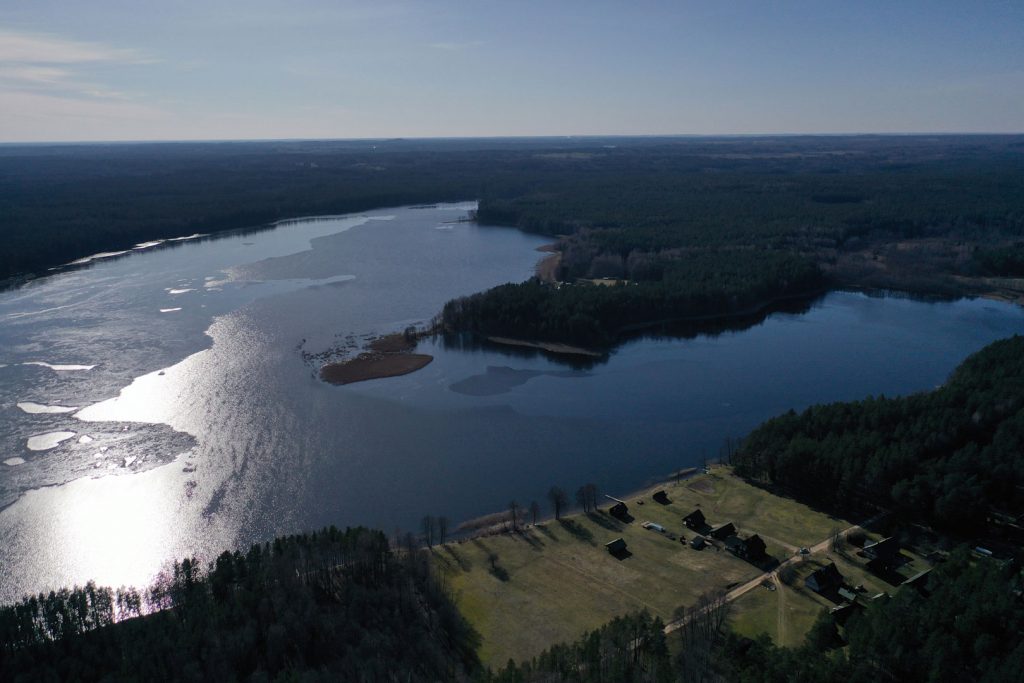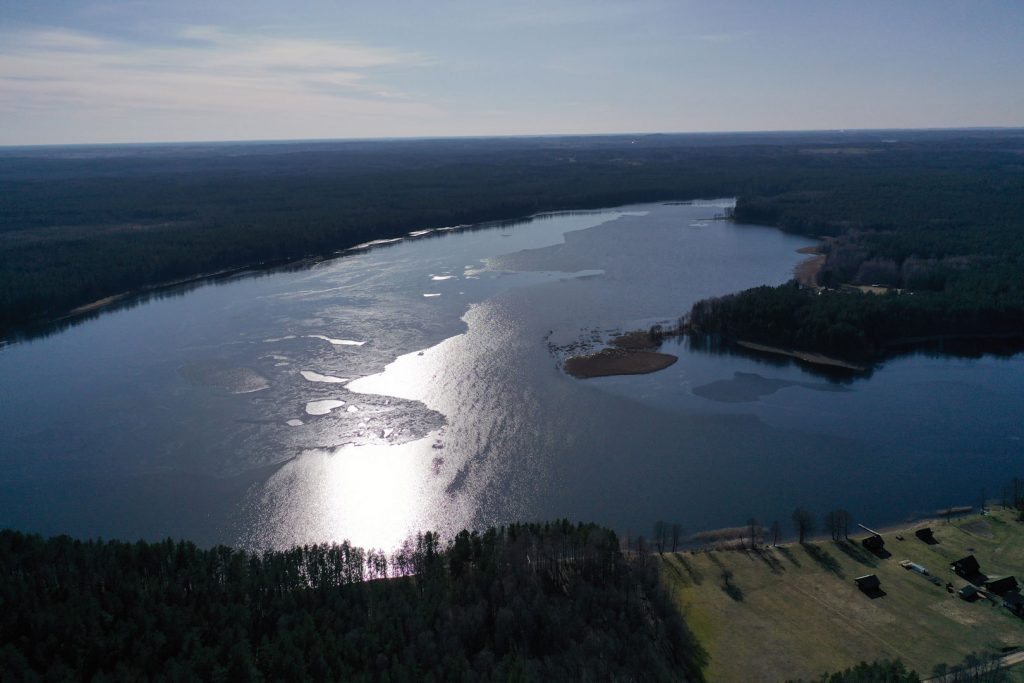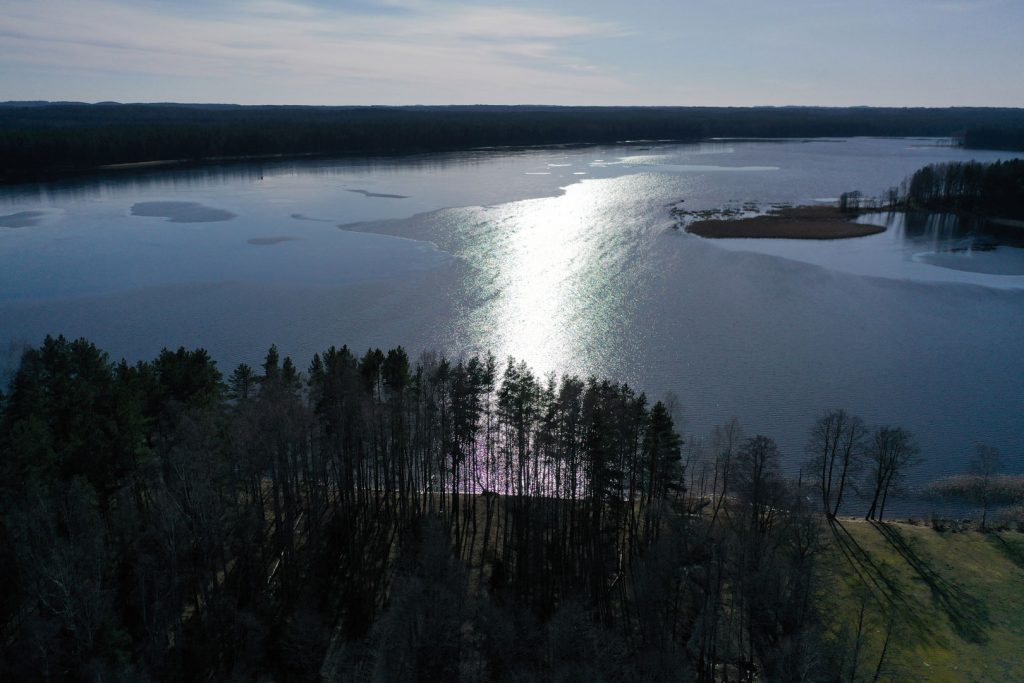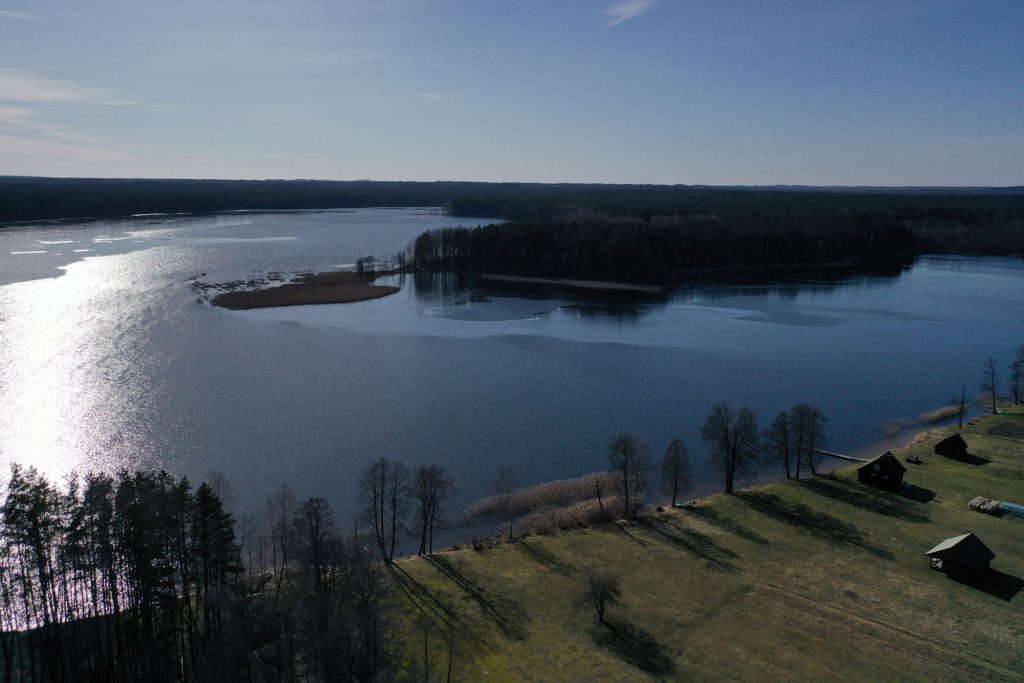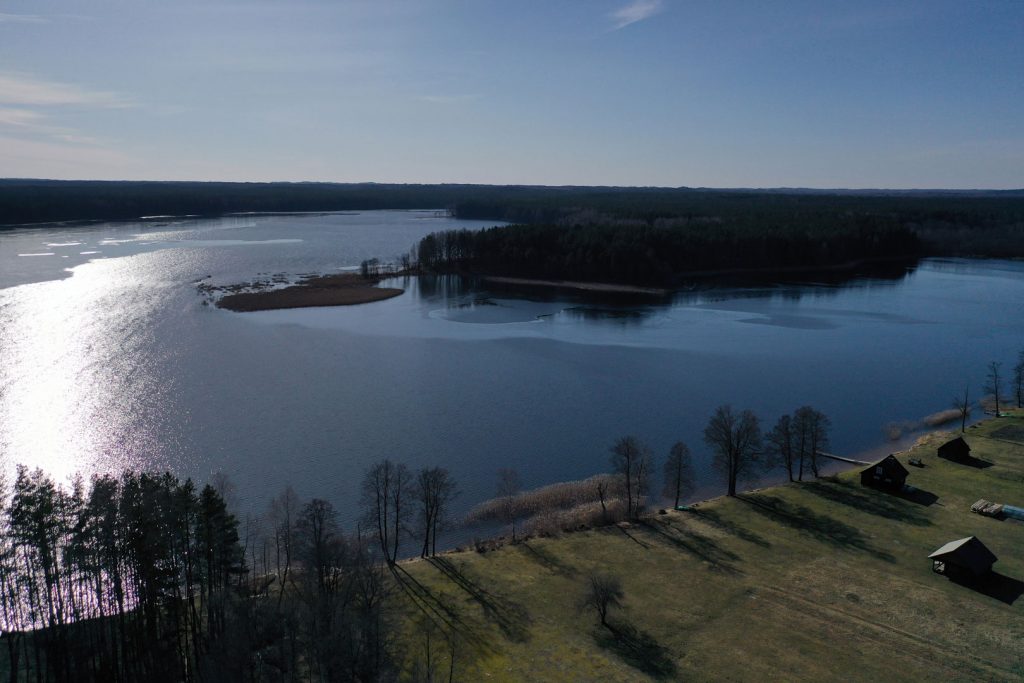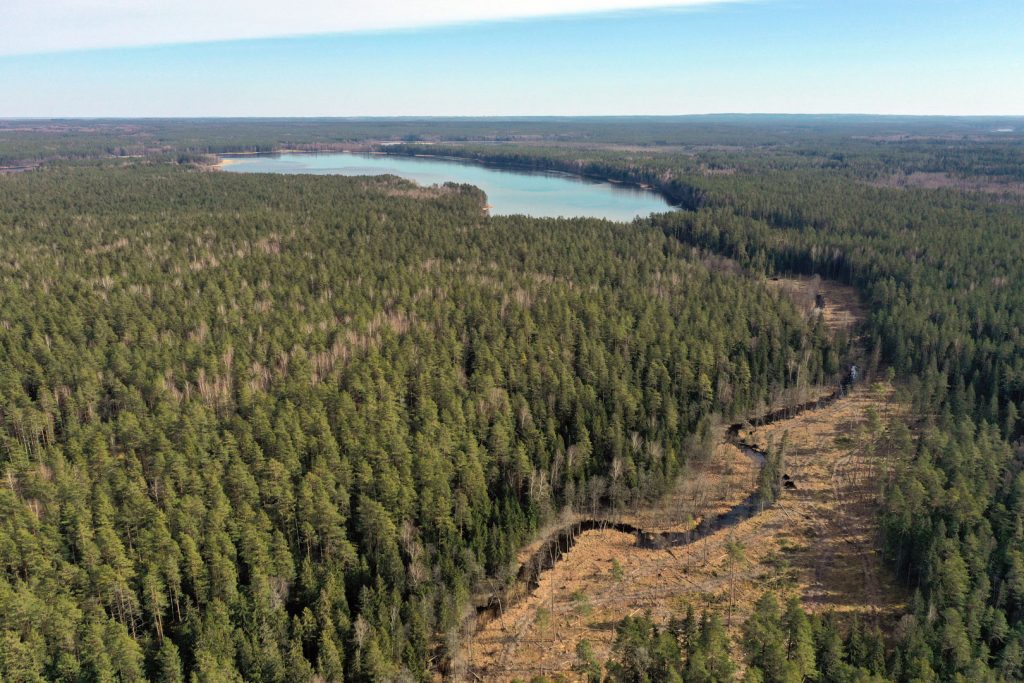Utenas
A 200- ha lake 10 km east of Tauragnas, in the territory of Aukštaitija National Park. According to one version of linguists, which may not satisfy lovers of this beautiful lake in Minčia wood, is the following: the derivative of Lithuanian utis, utėlė, meaning „small, wingless parasitic insect, lice“. The length of the lake 5.7 km, average width 0.55 km, the coastline 7.5 km. Of glacial trough origin, with high, steep and dry banks; sandbanks are sandy and wide, comparatively poorly overgrown with water vegetation. The bed is with hollows, the greatest depth 21 m, average depth 8 m, volume of water 16 m.m³. The lake is richly fed with underground water. The river Minčia flows into, which is the hydrographic upstream of Žeimena, from Žiežulnys lake flows in Žiežulna, a rivulet of Ažvintė river. Through a wide strait connects with Utenykštis lake which is situated slightly below. The basin is wooded and sandy. And although its area is even 118 km², the water level fluctuates only about 40–50 cm.
Utenas is fishy and likeable by fishermen, since long ago has been famous for its big basses and pikes. Besides these predatory fishes, there also live vendace, bleaks, roach, rudds, tench, breams, white breams. Scientists who studied the lake caught a record bass, 17 years old, 42 cm long and 1928 g of weight. The fact of the catch was published in the publication „The National Park of Lithuanian SSR” in 1981.This is the largest bass ever caught in Utena region.
According to ichthyologists, feeding conditions for breams in the lake are not favorable, they grow slowly, so just a few big ones are caught. The largest populations are those of roach, rudds, basses, bleaks and pikes.
Equally from the list of fish were „eliminated“ ide and chub. Chubs withdrew from the place they did not favor. With the change of growing conditions, protected algae also disappeared. However, there appeared more silver carps and more tench and rudds are caught. Trust the advice of local fishermen and you will not be left without a catch.
Next to Utenas lake there used to work Minčia water mill, which is in Minčia village in Utena district, described for the first time in Tauragnai manor inventory of 1792. The mill and the rough cloth fulling-mill had been already rebuilt because the inventory describes some old equipment parts of the former old mill and fulling-mill. Here are also described other buildings of Tauragnai manor which were in Minčia: an inn at the mill, barn, stables, brewery, bakery. It is obvious that those buildings were necessary for a normal existence of the mill which belonged to the manor. So most probably, the mill was for the needs of the manor and servicing local inhabitants. According to the inventory, the wooden mortar and pestles of the rough cloth fulling-mill were old, the water wheel and the bridge across the Minčia river were new; there was a sledgehammer for crushing stones, and an old cast iron boiler. So most probably the mill had been rebuilt on the foundations of an earlier water mill, maybe built in the first half of the XVIII century. It stood on the other, the right, side of the river and was pulled down in the beginning of the XX century. In archival materials from 1863-1864 the mill is not mentioned. What is mentioned is a copper workshop. Probably the workshop- mint and the mill operated at the same time and in the same old building of the mill. In the workshop which mainly made copper dishes, the rebels of the uprising of 1863 made bullets. It is thought that the copper workshop and the mill operated at the same time and in the same old building of the mill. On 15 May, 1863, 4 km from the mill there was a battle between a rebel squad led by a war engineer Kasperas Maleckis and a squad led by a Russian colonel Paltorackis.
At the beginning of the last century in the mill there was a sawmill which made shingles for roofing. Next to this mill, now demolished, in the second half of the XIX century there was built another building (the present one) on the other side of the river, which belonged to a private owner of Jewish origin Rogovas. The construction of this mill is relatively innovative. It is a two-storey building with some rooms under the roof, large enough, its modern equipment was driven by a water turbine made of metal. Local people claimed that that was an older, about 200 years old, building, only rebuilt from the former workshop – copper mint building. Architect R. Repšys is of an opinion that in 1905 the mill was rebuilt on the old foundations, retaining the former configuration, dams and locations of the pool; however, he does not explain where he knows these facts from. There is quite a number of old equipment left: grindstones for grinding for bread and fodder, millstones for fine quality flour, rough cloth fulling-mill and equipment for cutting shingles for roofing. Contemporaries also remember a tool bench with equipment for dyeing rough cloth, a device for lifting sacks, scales. The present rough cloth fulling-mill was built before the First World War, but didn‘t work after the war for a long time. Since the beginning of the XX century there was a sawmill where boards and shingles for roofing were cut. The mill didn‘t work during the First World War and after the war; it started to work in around 1920.
For the studies of the mill history Česlovas Mikštas‘ reminiscences are very important; he was born in Minčia in 1914 and worked in the mill for 30 years. The narrator claims that the mill used to be of three storeys (the third floor in the attic). On the first floor there was a sawmill and a rough cloth fulling-mill, where there was a large box and wheels. Into this room coarse grains were poured. The production from the first floor was taken out through the side door. There were stairs from the first floor to the second floor. On the second floor there were two millstones, a granary, where coarse and fine grains were made. Nearby there was a large room and next to it on the right, stairs to the attic. On the second floor against the door which was in the western facade, there were scales and next to them a wooden wheel with handles and a chain – a device for lifting grain bags. From the third floor grain fell along a trough to the millstones that were on the second floor to be ground into flour and grits; the ground flour and grits fell down along another trough into the boxes on the first floor. On the second floor, in the northern side of the house, there was a storehouse, a kitchen and two rooms accessed through the kitchen. Here there was an oven for baking bread. Previously there lived the owner of the mill, then a tenant. Before the war the owner was Rogovas, and from 1937 the mill was rented by Juodvalkis. The windows of the mill were with bars, the roof was covered with shingles, the floor was made of boards, the swing door was wooden and decorated in the shape of „a fir tree“.
In 1972 everything what remained from the equipment of the mill was the grain lifting device, ladder, millstones for fine quality flour, cast metal turbine. R. Repšys writes that copper mint equipment was removed between the wars.
The rough cloth fulling-mill worked since 1937. The premises of the fulling-mill were on the first floor. In the room there was a stove with a big boiler for heating water. However, it is not clear where exactly the premises were, because already in 1970 the mill was in ruins. According to local people‘s reminiscences, in the fulling-mill there was a tool bench, tools for dyeing.
The foundations of the mill are made of posts hammered straight into the ground, the base is made of field stonework from outside and the inside from concrete. The external walls are made of cut logs, reinforced with wooden braces and joined by dovetails in the corners. The roof is a span roof made of rafters, supported by four trusses, covered with shingles. The floors are of beams, ceilings are of overcrossing boards, most of the rooms have the board flooring, only in utility rooms the floors are concrete or covered with ceramic tiles. The stairs on the northern side of the mill are of reinforced concrete, on the southern side, made of wood. The building facades of the mill are of modest forms, asymmetric, the end facades (southern and northern) with high triangle vaulting covered with vertical boards. The wall planes are divided by unequally positioned braces and two rows of rectangular windows decorated with frames. In the middle of the main façade (western) and the northern façade there are swing-doors. The main façade is brightened up by a wooden bridge from the embankment to the door. In the south-eastern part of the mill there is an exposition of the equipment of the mill. Next to the mill there is a wooden bridge. In 1957 during emergency repairs the posts were reinforced with concrete. Near the mill a dam was built on the river. The pond was big, its banks were overgrown with trees and bushes, and the road to Utena passed only over the bridge. The pond was not cleaned and the wooden dam was rarely repaired, so in the long run it rotted and began to deteriorate. In 1970 the dam was disassembled and the pond was drained. Across the former pond a road was built. Up to 1969 the mill belonged to the former “Ąžuolas” collective farm which neglected the mill. Since 1979 the mill has belonged to Utena electric power network organization. At present in Minčia water mill there is “Rytų skirstomųjų tinklų” (Eastern Distribution Networks) leisure center whose project was designed by the architect Irena Staniūnienė in 1983. In 1986 a pond was reinstalled there.
